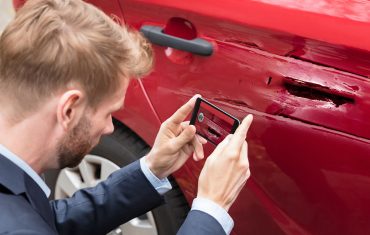
Is now the time to look at sale and leaseback for your fleet?
For your fleetBusinesses know that adaptability and flexibility are some of the essential qualities for growth and success. The impacts of business change and disruption due to the coronavirus pandemic is testing the limits of our ability to navigate uncharted waters, and to pivot to new ways of getting the job done with little to no warning at all.
As we continue to anticipate what our business might look like and how it will grow – in the short, medium and long-term, most smart organisations are dedicating considerable time and resources to contingency planning and futureproofing as best as they can.
In the case of businesses that own and maintain a fleet of cars, vans or trucks, the option of switching to a sale and leaseback arrangement with a leasing partner might be one strategy that can ensure an extra degree of business certainty.
You can release capital tied up in depreciating assets, and put it to better use in the strategic assets that make your business tick, as well as reducing your exposure to future risk. So, how could you free up much-needed cash and minimise some of the major risks associated with the operation of fleets?
Sale and leaseback explained
To put it simply, under a sale and leaseback agreement, you sell your vehicles to a leasing partner who then leases them back to you for a set duration.
The biggest advantage of a sale and leaseback is that it provides your business with the chance to release capital tied up in depreciating assets. That money can then be put to better use and give you the ability to focus on the assets that really make your business tick.
The decision to do a sale and leaseback needs to be considered as a strategic one – it’s a big decision that will inevitably involve big dollars. It’s therefore important to partner with a leasing company that has a proven track record, experience and expertise in managing sale and leaseback, so you get the required help and guidance along the way.
Risk reduction
There’s a considerable level of risk that comes with operating your own fleet of vehicles. One of the biggest problems that fleet managers must contend with is asset risk, i.e. the risk that they’re not worth as much as you had them on your books for when they get to the end of their life .
Another significant risk comes in the form of operational risk, i.e. the real challenges of managing your fleet when you look at servicing and maintaining your fleet (tyres, mechanical and body repairs), insurance costs, roadside assistance and other costs that you often have limited to no control over, or areas of expertise you may not have within your organisation.
A sale and leaseback is one way of reducing your exposure because much of the overall risk is transferred to your leasing partner. By concentrating their efforts solely on the management of your fleet, a leasing partner can more accurately apply their data and market experience to better calculate a vehicle’s value at the end of its working life.
Additionally, because a leasing partner will have so many vehicles and fleets under management, they can streamline maintenance scheduling and cap service costs. With more efficient servicing, minor mechanical issues are identified before they become major and more costly issues, and servicing can be undertaken in a much more timely fashion with the manufacturer/dealer.
Another major risk that a sale and leaseback addresses is ensuring your fleet is the right one for your business – fit-for-purpose. An expert leasing partner will work with you to analyse and identify which vehicles in your fleet to lease, which ones it might make better financial sense to continue to own and, in the context of overall running costs and measuring that up to some pretty exacting OH&S obligations, which vehicles to completely replace for the most cost-effective fleet management.
Having a fleet that’s fit-for-purpose ensures your costs remain as low as possible, your employees are using state-of-the-art vehicles with the latest safety technology and your vehicles get better re-sale value at the end of their working lives.
Flexibility
An expert leasing partner will see this process as a partnership and avoid steering you towards a one-size-fits-all approach.
As opposed to a blanket contract duration for your entire fleet, a sale and leaseback arrangement needs to be flexible enough to assess each vehicle individually. This way, you can ensure you get the maximum value from your cars, trucks and machinery without paying too much for maintenance and other ongoing costs.
Likewise, a leasing partner can help you make sure the terms and usage of your sale and leaseback are as flexible as you need them to be. You can nominate the kilometres you anticipate doing, and the length of time you’ll need vehicles. In many instances, there will be room to change your mind, if necessary.
In conclusion
Business and the wider economy thrive on certainty. A sale and leaseback agreement is a strategy that many will employ to strengthen their organisation’s existing position and provide greater assurance and efficiency.
Sale and leaseback arrangements can improve your organisation’s cashflow position. They are also extremely flexible, come at a lower cost to finance as opposed to building and maintaining a fleet yourself and, perhaps most importantly, reduce so many of the major risks associated with operating your own fleet.
Download the whitepaper, below:
If you’re investigating ways to mitigate any impacts of the global pandemic, talk to us about how a sale and leaseback can assist.
 Driving Insights
Driving Insights





